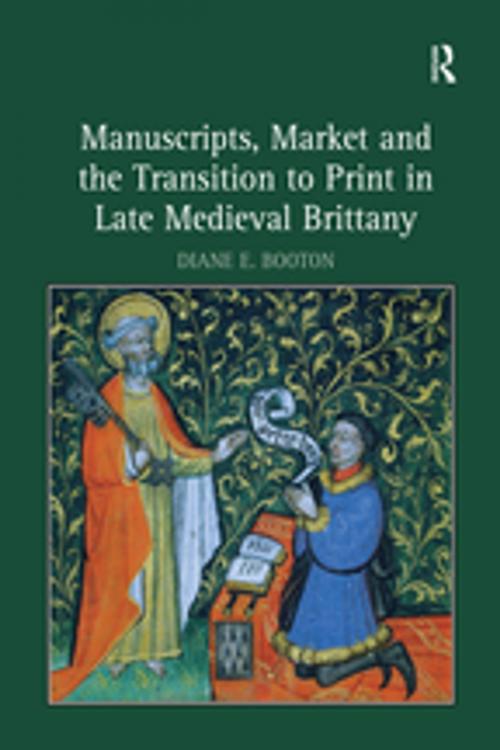Manuscripts, Market and the Transition to Print in Late Medieval Brittany
Fiction & Literature, Literary Theory & Criticism| Author: | Diane E. Booton | ISBN: | 9781351920025 |
| Publisher: | Taylor and Francis | Publication: | December 5, 2016 |
| Imprint: | Routledge | Language: | English |
| Author: | Diane E. Booton |
| ISBN: | 9781351920025 |
| Publisher: | Taylor and Francis |
| Publication: | December 5, 2016 |
| Imprint: | Routledge |
| Language: | English |
Manuscripts, Market and the Transition to Print in Late Medieval Brittany surveys the production and marketing of non-monastic manuscripts and printed books over 150 years in late medieval Brittany, from the accession of the Montfort family to the ducal crown in 1364 to the duchy's formal assimilation by France in 1532. Brittany, as elsewhere, experienced the shift of manuscript production from monasteries to lay scriptoria and from rural settings to urban centers, as the motivation for copying the word in ink on parchment evolved from divine meditation to personal profit. Through her analysis of the physical aspects of Breton manuscripts and books, parchment and paper, textual layouts, scripts and typography, illumination and illustration, Diane Booton exposes previously unexplored connections between the tangible cultural artifacts and the society that produced, acquired and valued them. Innovatively, Booton's discussion incorporates archival research into the prices, wages and commissions associated with the manufacture of the works under discussion to shed new light on their economic and personal value.
Manuscripts, Market and the Transition to Print in Late Medieval Brittany surveys the production and marketing of non-monastic manuscripts and printed books over 150 years in late medieval Brittany, from the accession of the Montfort family to the ducal crown in 1364 to the duchy's formal assimilation by France in 1532. Brittany, as elsewhere, experienced the shift of manuscript production from monasteries to lay scriptoria and from rural settings to urban centers, as the motivation for copying the word in ink on parchment evolved from divine meditation to personal profit. Through her analysis of the physical aspects of Breton manuscripts and books, parchment and paper, textual layouts, scripts and typography, illumination and illustration, Diane Booton exposes previously unexplored connections between the tangible cultural artifacts and the society that produced, acquired and valued them. Innovatively, Booton's discussion incorporates archival research into the prices, wages and commissions associated with the manufacture of the works under discussion to shed new light on their economic and personal value.















